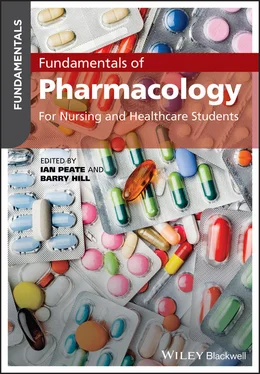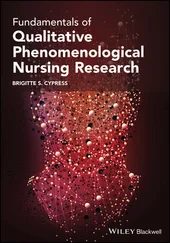This chapter aims to introduce you to using pharmaceutical and prescribing reference guides with a specific focus on the BNF and other pharmaceutical reference guides. These guides are vital and valuable resources to draw upon to ensure safe, accountable and evidence‐based care that is matched to the needs and wishes of the people you care for.
You are a first‐year student on your first placement; with your practice supervisor you are assessing a new patient on admission. They give you a list of medication they take and it has lots of names on it that are new to you. You want to impress your supervisor and find out about them for your next shift. How do you do this? Where do you turn?
Your supervisor suggests you look them up and points you to a paper copy of the BNF. Upon opening it, it appears confusing, full of sections and symbols, and you are unsure how to find the information you need.
Open a paper copy of the BNF and find the last drug you discussed or saw in practice.
Can you locate it?
What form does it come in?
What are the side effects?
Are there any interactions?
Can it be bought at the supermarket?
These are some considerations you may have when supporting people with medication. Pharmaceutical reference guides will help you navigate this complex process and support your evidence‐based practice.
The British National Formulary
Produced by the Joint Formulary Committee, the BNF is one of the most commonly used and reliable sources of information on medication. It offers comprehensive details on individual medications, groups of medications, uses, side effects and interactions and can assist with decision‐making. The BNF is an essential tool for all practitioners; it is a repository of almost all drugs that are used in British healthcare settings (Young and Pitcher, 2016). The nurse should ensure they are familiar with its use, making it the go‐to guide for any queries regarding drugs. A joint publication of the Royal Pharmaceutical Society and British Medical Association, it is devised to offer all healthcare professionals contemporary information on medications and their uses. The information provided is sourced from summaries of product characteristics for medications, literature, consensus guidelines and peer review and employs a grading system of A–E and levels of evidence to help readers understand the strength of evidence underpinning the associated recommendations given (Joint Formulary Committee, 2019a).
Two types of BNF are available for practitioners: the BNF and the BNF for children (BNFc). Ensuring that you use the most appropriate type for your practice area is essential as medications, recommendations, licensing, legislation and monitoring differ for adults and children. The BNF is published in paper copy bi‐annually in September and March and the BNFc is published in paper copy once a year in September. There are electronic versions (as discussed later) which are frequently updated, so it is always advisable to use the electronic version to ensure the most up‐to‐date information is accessed.
As a health professional you are accountable for using the most up‐to‐date evidence base for your practice. This means ensuring that you only use the current version of the BNF and that which relates to your practice area and patient group. You should consider:
that previous versions may have outdated information or even sections that have been removed;
the implications of advising your patient on their medication regimen if the information source you have chosen is out of date. What are the potential risks to the patient? What could this mean for your practice and accountability?
At first glance, the BNF can be overwhelming; however, with a little practice it quickly becomes a fast and reliable way to gather information for yourself, patients and those you work with.
The current BNF print versions are organised into four main sections:
front matter
chapters
appendices
back matter.
Careful attention should be paid to the font colour (see Table 2.1), images and symbols used in the BNF as these all convey pertinent information.
The front matter of the BNF gives quick access to information such as how to use the BNF, the layout of information throughout chapters, and significant changes that have taken place since the previous edition. General guidance is given on prescribing and the requirements of legal prescriptions, both handwritten and computer issued. Special attention is paid to controlled drugs, alongside adverse reactions to drugs, and it offers guidance on recognition and reporting.
Table 2.1 Font colour and information purpose
| Text format |
Information use |
| Black |
Information on treatment summary and therapeutic uses |
| Colour block |
Information on drug‐specific information |
A general overview of specific patient‐centred considerations is given in relation to prescribing in hepatic (liver) and renal (kidney) failure, as well considerations for pregnancy, elderly and palliative care. Each section has a broad overview followed by specific considerations. For example, in prescribing for palliative care, specific information is provided on pain, wider symptom control and continuous subcutaneous infusions.
The main body of the BNF is divided into systems chapters (i.e. gastrointestinal system) and follows the same structure.
Some drugs and chapters have a class monograph . A class monograph includes information that is common to all drugs within a particular class. It is important to read these in conjunction with the drug monograph , which gives information relating to that drug in particular. Class monographs are identified by a flag in a circle  . If the drug you are seeking advice on has an associated class monograph it will be indicated by a tab with a flag symbol and the page number where the class monograph can be found
. If the drug you are seeking advice on has an associated class monograph it will be indicated by a tab with a flag symbol and the page number where the class monograph can be found  .
.
Access a copy of the current BNF and open the gastrointestinal system chapter. It starts with a clear contents section indicating what can be found in the chapter and is followed by information on the associated diseases, conditions and disorders, treatment summaries and individual medication information. Focusing on constipation, find and read the description of the condition and its associated overview and management.
The classification of the individual drug is indicated in blue (e.g. Laxatives: Bulk‐forming laxatives) with the drug name and drug monograph sited below. The drug monograph provides comprehensive information on the drug all in one concise section. Pertinent guidance is offered relating to drug action, indications and dose, adjustments and interactions, safety information, contraindications, signposting to the correct section of interactions, side effects and medicinal forms.
Drug class monographs have been created by the publishers of the BNF. Where there is common information relating to a class of drugs, the shared properties are contained in a drug class monograph. Drug class monographs are emphasised by a circled flag symbol next to the title of the drug class monograph. The corresponding individual drug monographs generally follow the drug class monograph; these are highlighted by a non‐circled flag symbol (see Figure 2.1).
Читать дальше

 . If the drug you are seeking advice on has an associated class monograph it will be indicated by a tab with a flag symbol and the page number where the class monograph can be found
. If the drug you are seeking advice on has an associated class monograph it will be indicated by a tab with a flag symbol and the page number where the class monograph can be found  .
.










